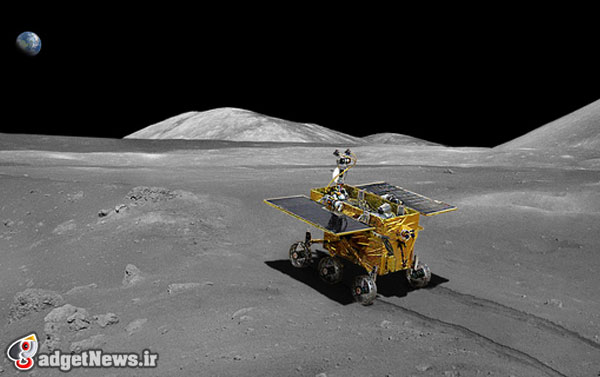
بر اساس اعلام مقامات شرکت فناوری و علوم فضایی چین، نخستین ماهنورد این کشور امروز (یکشنبه) به فضا پرتاب خواهد شد.این کاوشگر که سومین کاوشگر ماه (چانگه-3) و نخستین ماهنورد چین محسوب میشود، پس از فرود بر سطح ماه، تحقیقات علمی خود را در قمر زمین آغاز میکند.
موشک حامل ماهنورد «Jadde Rabbit» امروز در ساعت 17:30 به وقت گرینویچ (21:00 به وقت تهران) از مرکز پرتاب موشکی شیچانگ در استان سیچوان چین به فضا پرتاب خواهد شد.
بر اساس اعلام موسسه تحقیقات مهندسی سیستمهای هوافضای شانگهای وابسته به شرکت فناوری و علوم فضایی چین، این ماهنورد از فناوریهای پیشرفتهای مانند سیستم ناوبری خودکار و طراحی ویژه چرخها با قابلیت حرکت بر سطح پودر مانند ماه برخوردار است.ماهنورد Jadde Rabbit همچنین قادر به بالا رفتن از موانع با زاویه 30 درجه و حرکت با سرعت 200 متر در ساعت است.
{photo}92/09/10/china-Moon-Lander{/photo}
آژانس فضایی اروپا (ESA) در آستانه پرتاب این ماهنورد با انتشار اطلاعیهای اعلام کرد که ایستگاههای رهگیری زمینی این آژانس به محققان چین در انجام این مأموریت کمک خواهند کرد.
پس از پرتاب ماهنورد چین و طی پنج روز سفر به ماه، مرکز فضایی گویان فرانسه در شهر کورو اقدام به دریافت سیگنال از این کاوشگر کرده و دستورات دریافتی از مرکز کنترل در چین را برای آن ارسال میکند.
«توماس رایتر» مدیر عملیات و پرواز فضایی سرنشیندار ESA تأکید کرد: خوشحالیم که ایستگاههای زمینی، تیم دینامیک پرواز و مرکز کنترل Estarck در دارمشتات آلمان میتوانند به محققان چین در انجام این مأموریت کمک کنند.
نام نخستین ماهنورد چین بر اساس نظرسنجی آنلاین با شرکت 3.4 میلیون شهروند چینی انتخاب شده است؛ نام «Jadde Rabbit» یا «یوتو» از یک افسانه چین باستان در مورد یک خرگوش سفید گرفته شده که از دانه نامیرایی خورده و بر روی ماه زندگی میکند.
منبع : space
China Will Launch Its 1st Moon Rover, 'Jade Rabbit,' On Sunday
China is counting down to the launch of its first moon landing mission, a mission poised to blast off Sunday (Dec. 1) to send the country's first lunar lander and rover to Earth's nearest neighbor.
China's first moon rover is called Yutu, which means "Jade Rabbit" in Chinese, according to state media reports. It will launch with the Chang'e 3 moon lander on Sunday 12:30 p.m. EST (1730 GMT), though it will be 1:30 a.m. Monday, Dec. 2 at China's Xichang Satellite Launch Center.
If all goes well, the Chang'e 3 mission will land on the moon on Dec. 14, according the European Space Agency, which is providing mission tracking of the lander and rover for China's space agency. [See Photos of China's Yutu Moon Rover and Chang'e 3 Lander]
China's first moon rover and lander
China's Yutu rover is a six-wheel robot that weighs nearly 310 lbs (140 kilograms) and is equipped with two solar panels for power. A global online poll was used to come up with suggested names for the robot. In the final round of voting, about 650,000 people out of more than 3.4 million chose Yutu.
"Yutu is a symbol of kindness, purity and agility, and is identical to the moon rover in both outlook and connotation. Yutu also reflects China's peaceful use of space," said Li Benzheng, deputy commander-in-chief of China's lunar program. Li announced the name at a press conference in Beijing on Tuesday (Nov. 26).
Yutu is a pet rabbit that travels with the goddess Chang’e to the moon in Chinese legends. China has named each of its three moon missions so far after Chang'e.
If all goes well, the Chang'e 3 mission will mark the first time a Chinese spacecraft has soft-landed on the surface of an extraterrestrial body. The spacecraft's landing, if successful, would also mark the first soft lunar landing since the former Soviet Union's Luna 24 sample return mission in 1976.
A new moon exploration phase
China's Yutu rover onboard the Chang'e 3 lunar lander is scheduled to land on the moon in mid-December. Once deployed, the robot can explore the surface for three months, according to mission descriptions.
The moon robot reflects a shift into the second phase of China's lunar exploration program, a step-by-step agenda that entails orbiting and landing probes, followed by the return to Earth of lunar samples.
China's Chang'e 1 and Chang'e 2 moon orbiter missions launched in 2007 and 2010, respectively. The country expects to have a robotic spacecraft return lunar samples to Earth by 2020.
As the countdown draws closer for liftoff of Chang'e 3 atop a Long March 3B rocket— reportedly modified with new technologies and improved reliability — there is caution being added by Chinese space officials: the voyage to the moon is risky business.
"More than 80 percent of the technology adopted in the mission is new, and with new technology and products carrying out new tasks, there are certainly great risks," said Li, as reported in China Daily. "It could be a trying process for the rover to move down the lander," he said.
Li said that to ensure the success of this mission, tracking and control networks have been set up in areas including China’s northwestern Xinjiang Uygur autonomous region and northeastern Heilongjiang province. Their capabilities, he said, are close to the current world standard.
 گجت نیوز آخرین اخبار تکنولوژی، علم و خودرو
گجت نیوز آخرین اخبار تکنولوژی، علم و خودرو 





